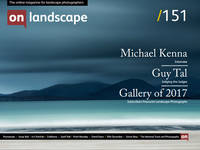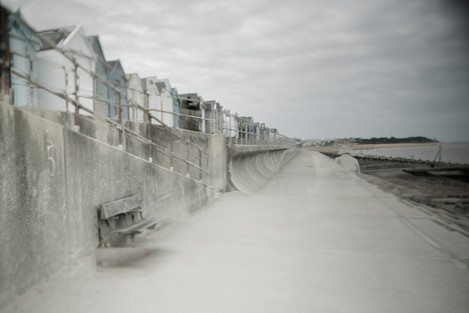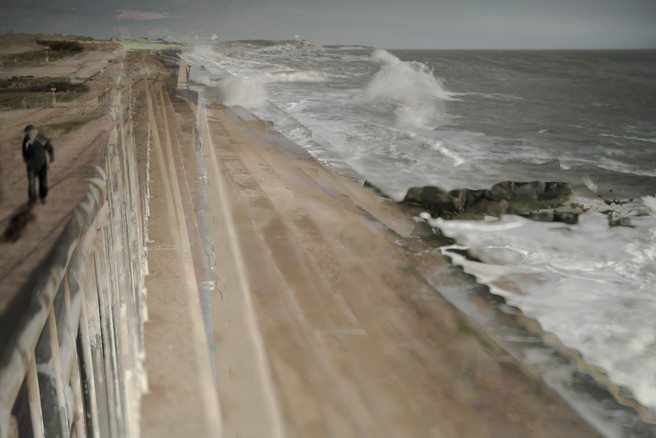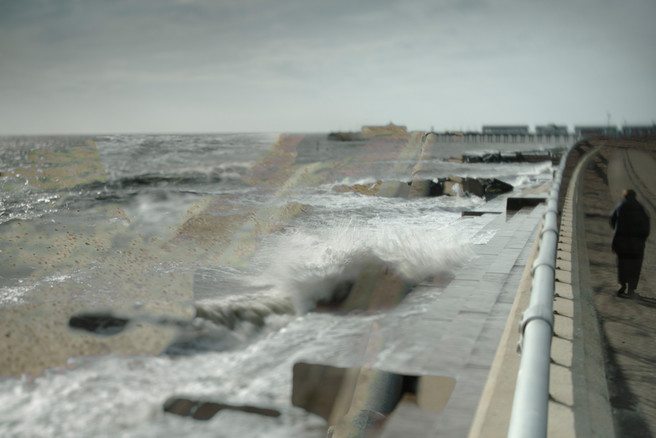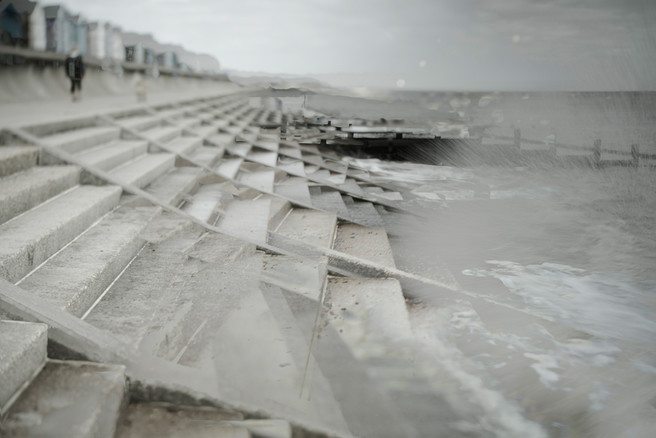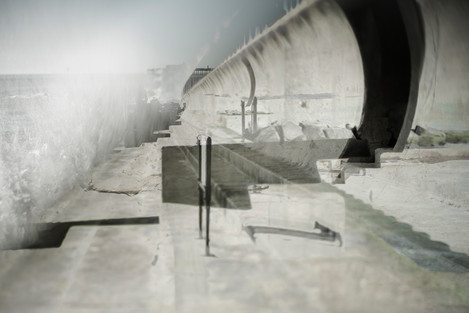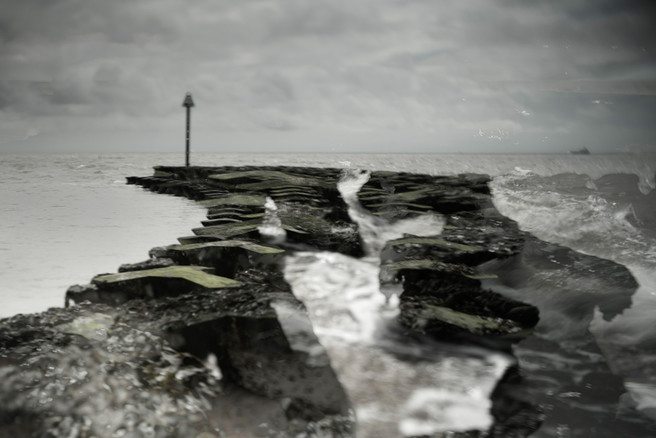The coastlines of East Anglia

Jonny Bell
Jonny is a UK based self-taught Photographer and sustainable development professional. Happy outdoors and with a camera.
He has a passion for image making and experimentation, with a fascination with light, process, texture and form. He spends as much time as possible looking for ways to express a wonder at the world, and how we live alongside and within it. Ultimately trying to create imagery that communicates and compels.
The landscapes I have in mind are not part of the unseen world in a psychic sense, nor are they part
of the Unconscious. They belong to the world that lies, visibly, about us. They are unseen merely because they are not perceived. –Paul Nash, ‘Unseen Landscapes’, Country Life, May 1938.
I have recently been working on a series of images exploring sea defences and the promenades along them. This Promenade series, set along the coastlines of East Anglia, had emerged originally from work exploring industrial elements in the landscape, evolving whilst grappling to find subjects to inform my expression and considerations of our interactions with our environments, and of concerns over environmental degradation.
Given the references in my work to our environment, as well as the landscape, I have increasingly made attempts to find written expression to accompany my works, it is something that I often hear many photographers say they struggle with, and I am no exception to this rule. I recognise that like most people I have emotional responses to nature and landscapes, I have sought out wild and remote areas to live and experience, for me this is necessary for my own wellbeing, if nothing more. But in recent years I have also sought to look beyond the aesthetics and emotion in my work. I want to learn to observe, and through my work to somehow better investigate the truth of my subjects.
In stumbling through some research to begin this process for the images emerging as Promenade, I chanced across some written work on Paul Nash’s exhibition at the Tate. On closer inspection it became apparent that the images I had been working on held significant references. I know some of Paul Nash’s early works well by sight, as opposed to study, and so in my mind’s eye when walking and visioning the series I assume that his influence was there, although largely unperceived. I decided that I would consciously try to allow and understand the influence and pursue further the links within these irregular worlds I was exploring.
For me the Promenade series has grown as an allegory of our struggles to manage and control nature’s fundamental elements.
Alluding to recent histories of Victorian and very British romanticisms of beach huts and sea sides, perched on tiers of concrete architecture. Yet through these fogs of sentiment there is also recognition in these ramparts of an increasing pace of change, of more modern battlements emerging engineered to hold back sweeping tides, multiplying the implication of threat. Yet through perception these intrusions in the landscapes occupy a subsidiary position to our enjoyment of the sliver of oceanic edges. There is a sense of concealment, somehow they sit unobserved in the broad expanse of landscape, often below the eye level of our vantage point, fenced off, a route of safe passage along a breach of cliff, at high tides partly softened through the sea’s interactions with them.
Immediately on consideration of Nash’s work in relation to the series I was aware of large manmade structures and objects in stark landscapes showing references, but perhaps of more interest I felt were the smaller less obvious connections, and it was these that I believe drew me to experiment further.
Perhaps for me the most unusual development was that I had started to include figures in my landscapes, at times almost ghost like, wandering the ramparts. Whereas previously I had sought to exclude human interaction in the landscape it felt right. The series provoked discussion around my emotional responses to imagery, that it is my feelings and longings that give meaning to the spaces in photographs, that my experiences are referenced and I apply a response framed through my eyes. So I found myself seeking out the inclusions and their relationships, not that it is necessarily me or any singular person represented, but my, their, our experiences, longings, and involvement in the issues that are of interest.
Ultimately there is a dialogue around the making of photographs. Why am I motivated to make this image? What do I want to portray? Some might say that emotion is an important part of every human being and so what more is needed than to experience and discover through the practice of photography and the making of images, in particular perhaps those within a landscape genre? But it is these questions that I had begun to consider through my own work.
Increasing allusions to wider human issues were encroaching on the presentation of the landscape aesthetic in my imagery. In Promenade I wanted to continue to explore these themes whilst further emphasising and presenting the implications of threat. In earlier works I had incorporated structures as representation, for example Sizewell B Nuclear Power Station as a related reference, and I wanted expand on this in the series by increasing the prominence of objects that are essentially alien to the natural landscape, juxtaposing concrete, steel, and angular structures with the fluidity of the sea and undulation of landscape. It now seems so obvious however the emergence of this prominence has been a significant echo from Nash’s works.
In their visioning and initial stages these references had emerged without intricacies of knowledge, however my exploration of influence has I feel helped me in expanding the Promenade series and its’ aims. The romantic views and visions of the world we live in as elements from the peopled picture post card remembrance of the seaside;
I am unsure whether the Promenade series is still in its infancy, whether the influences discussed will persist, perhaps this is just a first chapter in my exploration of these particular themes. I have enjoyed the process although feel a sense of pause. Whatever the conclusion I am indebted to the creative vision of another, whose exploration for truths has helped mould my own, both unconscious and now conscious. And I hope that I will blossom under these influences, perhaps if I have any learning to depart from the process of working on Promenade, it is to urge all creative minds to seek out the influence, embrace it, learn and grow, whether it be subject, theme, or technique, not as a pure homage but I feel by absorbing and challenging ourselves to portray new expressions, we can progress in ways that perhaps were previously unperceived and unseen.

